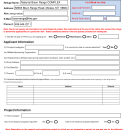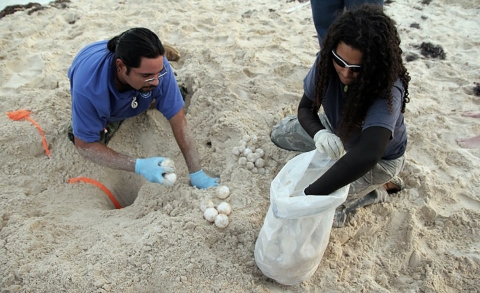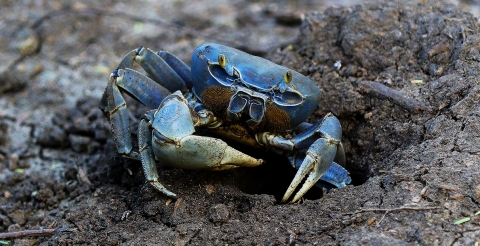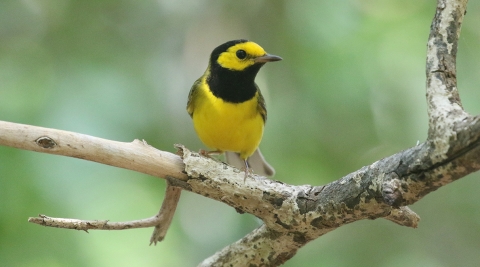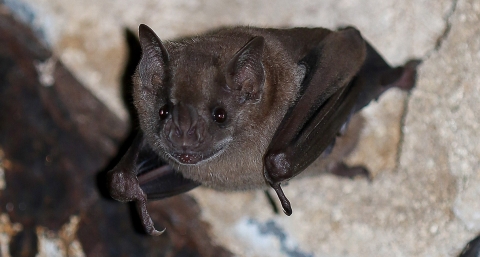What We Do
The VNWR borders the urban area and it is delineated by the Wildland Urban Interface (WUI) firebreak. In addition to USFWS personnel, the Fire Program trains Commonwealth, Municipal and nongovernmental agencies for wildland firefighting. The VNWR crew combats wildland fires in Vieques and assists throughout the Caribbean NWR Complex, the Area, Region and Nation, as needed. Our crew also works on and off refuge for hurricane and any other natural disaster relief, in conjunction with FEMA and the Vieques Municipality. We work on search and rescue operations with the Vieques Municipal Emergency Unit, the commonwealth and other federal agencies.
Management and Conservation
Refuges deploy a host of scientifically sound management tools to address biological challenges. These tools span active water management to wilderness character monitoring, all aimed at ensuring a balanced conservation approach to benefit both wildlife and people. At this field station our conservation tool box includes:
- Planning – Comprehensive Conservation Plan
- Habitat Restoration
- Cultural Resources
- Education & Outreach
- Fire Management
- Invasive Species
- Inventory and Monitoring
- Law Enforcement
- Recreation Management
- Species Research
- Wildlife Health
- Wilderness Character Monitoring
Our Services
At this field station we offer the following public services:
Visitor opportunities include a Visitor Center, access to different a variety of forests, beaches, trails, and boat ramps.
Near the Visitor Center there is a hiking trail leading to the Historic ruins of the Puerto Ferro Lighthouse and beach. While another leads to the Puerto Mosquito NNL Observation Platform. The Wildlife Refuge can be visited on both the Western and Eastern sides of Vieques, and is open to the public year-round. Recreational activities in the public areas include: bicycling, hiking, horseback riding, wildlife observation, wildlife photography, environmental education and interpretation.
In addition, our visitors will be able to do kayaking, paddle-boarding, fishing, snorkeling, and SCUBA diving at the beaches and lagoons.
Entrance fees are not required.
- Habitat Planning & Management
- Special Use Permit – For all Commercial Activities
- Special Use Permit – Fishing (Crab & Night Fishing)
- Special Use Permit – Research
- Special Use Permit – General for special events and similar activities
- Environmental Education Talks & Field Trips
- Environmental Education Virtual Talks
Our Projects and Research
The Biology Program at the Vieques NWR has helped to demonstrate the importance of Vieques Island for its conservation and biological diversity, within the Archipelago of Puerto Rico. The program has forged partnerships with the community, universities, Municipal, Commonwealth and Federal agencies, non-government organizations and others to conserve and protect the natural resources of this beautiful island.
Sea Turtle Conservation
Vieques has a number of significant nesting beaches for three endangered sea turtle species: Leatherback (Dermochelys coriacea), Hawksbill (Eretmochelys imbricata) and the Green Sea Turtle (Chelonia mydas). In fact, Vieques is the number one nesting site for the green sea turtle and among the top five for the other two species in Puerto Rico. The VNWR, the DNER and TICATOVE are the primary partners working on this project, which lasts 10 months of the year.
Land Crab Studies
Land crab (Cardisoma guanhumi) populations have declined in Puerto Rico and are protected by the Commonwealth. Research at the VNWR focuses on the current status and health of land crab population and their habitat. This data is used to create a recreational land crab trapping season on the wildlife refuge. This a very popular activity for the community.
Bird Monitoring
Protected forests, valleys, beaches and lagoons are important sites for migratory and resident birds. They feed, rest and some species reproduce here. Over the past fifteen years, surveys show that the 120 plus bird species originally reported for Vieques is more than 190 species. Monitoring in areas such as Playa Grande lagoon in the VNWR show that the individual numbers and populations of birds are also higher than previously recorded. The biology program also monitors nesting brown pelicans and birds across other areas. The delisted brown pelican, a former endangered species, nests twice a year in Vieques and is considered the largest in Puerto Rico.
Bat studies
Bats are the only native land mammals found in Puerto Rico. Bat research conducted in Vieques focuses on species diversity, populations and habitat use. Nine of the thirteen species of bats present in Puerto Rico have been reported in Vieques, including two new records. The VNWR has also conducted habitat improvements for a number of bat species.
Greenhouse
The greenhouse is part of a number of habitat restoration projects; propagating endemic, native and endangered plant species such as Matabuey (Goetzea elegans) and Cobana Negra (Stahlia monosperma). The greenhouse is also used for a number of educational programs, as well as to create new interpretive trails to increase people’s conservation knowledge and restore habitats for birds, and amphibians, among others.
Varronia rupicola
This endangered Caribbean plant is only found on the British Virgin Islands, the Guánica Forest of Puerto Rico and on the Vieques NWR. Research by our biology program along with other conservation partners indicate that the Vieques population may be different in many ways from the other populations. It has been listed by the USFWS as the number one plant species in need of restoration efforts in the US South-east and Caribbean region.
Herpetology studies
Several herpetofauna studies have been done in Vieques for species diversity, population and health status. Other aspects focus on endangered species surveys for the Puerto Rican boa (Epicrates inornatus), the Virgin Island boa (Epicrates monensis) and the Culebra's giant lizard (Anolis roosevelti).
Laws and Regulations
The Law Enforcement program at the Vieques NWR is designed to help visitors enjoy the Wildlife Refuge, and understand and obey wildlife protection, traffic and other public safety laws. The Law Enforcement Officers work closely with state, other federal and local government offices to enforce federal and state regulations that protect wildlife from illegal take and protect visitors and other people using the wildlife refuge.







